#csic
Text
youtube
Ya tenemos en la web del proyecto FASTOS (https://lnkd.in/d3YmefuG) la sesión de #indiferentevirreinal de Manuel “Saga” Sánchez García, doctor arquitecto afincado en Madrid, España. Tras una década de experiencias internacionales, actualmente es contratado postdoctoral Juan de la Cierva en el Departamento de Historia de la Arquitectura de la ETSAM-UPM y miembro del Grupo de Investigación en Paisajes Culturales (GIPC).
Su charla Paisaje, ley, colonia retoma los resultados del proyecto de investigación postdoctoral desarrollado en Dumbarton Oaks, Universidad de Harvard, Washington DC sobre jardines y paisajes, con fuentes y manuscritos de la Colección de Libros Raros de Dumbarton Oaks, la Biblioteca del Congreso, Archivo General de Indias, Biblioteca Nacional de España, Real Chancillería de Granada, Archivo Provincial de Jaén, Archivo de Valdepeñas de Jaén, entre otros.
#manuel saga#historia#historia urbana#ciudad#colonia#investigación#upm#universidad#csic#csic-illa#fastos#cultura#andalucia#colombia#bogota#jaen#granada#etsam#juan de la cierva#Youtube
0 notes
Text
Studi / Archeologia, datate le canoe neolitiche della Marmotta, (lago di Bracciano): hanno tra i 7.000 e i 7.500 anni e sono le più antiche d'Europa
Studi / Archeologia, datate le canoe neolitiche della Marmotta, (lago di Bracciano): hanno tra i 7.000 e i 7.500 anni e sono le più antiche d'Europa
La ricerca, guidata dal Museo delle Civiltà, dall’Università di Pisa e dal CSIC, è pubblicata su PLoS ONE
Redazione
Un gruppo di ricerca guidato dal Museo delle Civiltà, dall’Università di Pisa e dal CSIC ha datato cinque canoe neolitiche trovate in un sito sommerso nel Lago di Bracciano (Roma): hanno tra i 7000 e i 7500 anni. Si tratta delle uniche e più antiche canoe neolitiche d’Europa e le loro caratteristiche rivelano una tecnologia di navigazione notevolmente avanzata.
Il lavoro pubblicato…

View On WordPress
#canoe neolitiche#CSIC#imbarcazioni#In evidenza#La Marmotta#Lago di Bracciano#Mario Mineo#Museo delle Civiltà di Roma#neolitico#notizie#Università di Pisa
0 notes
Text
Día 24-1-24 Visita al CSIC .y vieron las Células Madres.
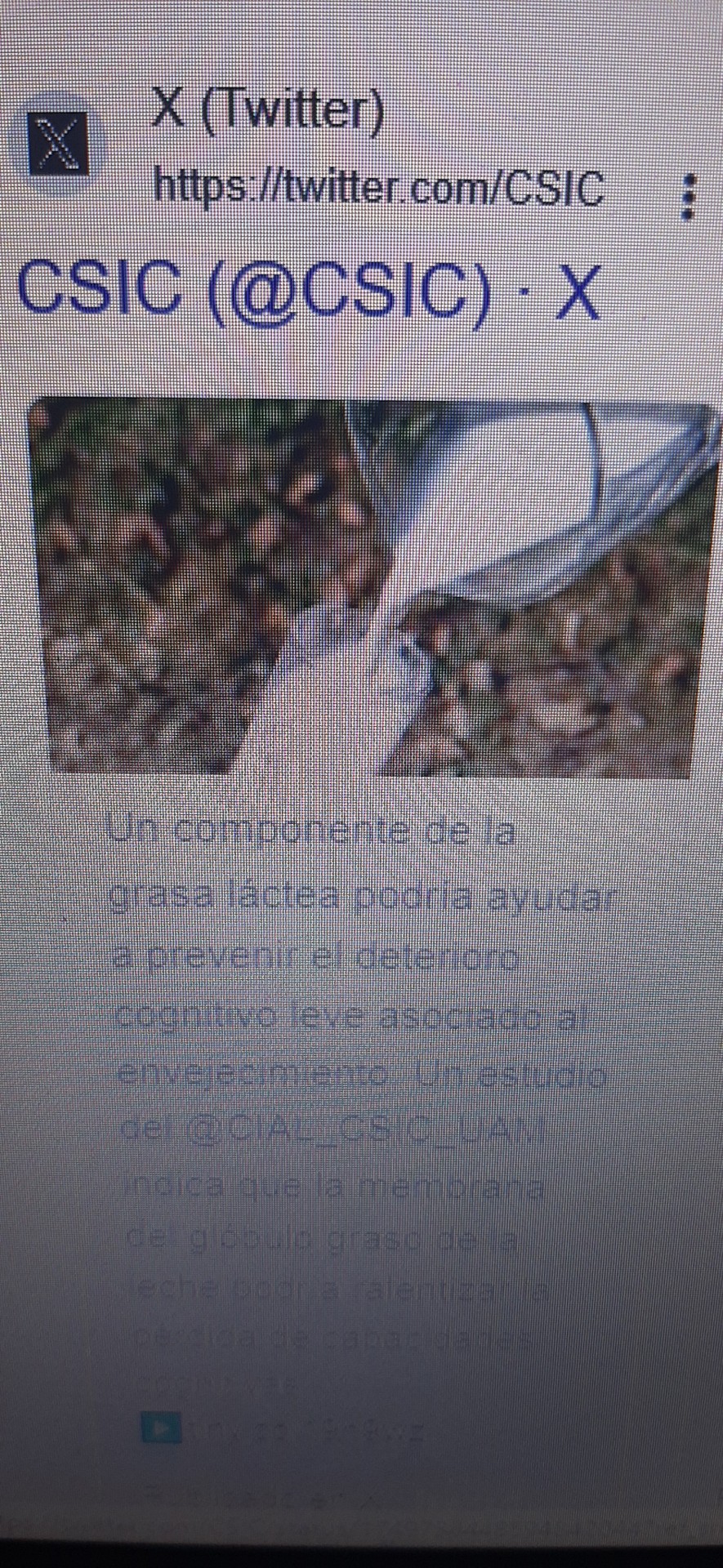
0 notes
Text


15 de enero de 2024.
Nota de Prensa del CSIC (Consejo Superior de Investigaciones Científicas, España).
Un equipo del CSIC demuestra que las células humanas ‘vibran’, lo que podría servir para detectar enfermedades.
1 note
·
View note
Link
Quadro Conexões no programa Multicultura da Rádio Educadora da Bahia FM 107.5.
Tema de hoje: #709 Fim do ciclo na Espanha www.educadora.ba.gov.br
0 notes
Photo

Naturaleza Encendida, (edición Origen) este año se completa con la visita a una exposición en el Palacio de Villanueva de Carlos de Mier, donde podremos descubrir la belleza de los mixomicetes, unos microorganismos ya presentes en el origen de la vida. Experiencia con dos partes zona exterior y zona interior. Para LetsGo y el Real Jardín Botánico (RJB - CSIC) la sostenibilidad es parte fundamental del proyecto, cuya matriz es el profundo amor por la naturaleza. La iluminación es tecnología LED de bajo consumo. #naturalezaencendida #sostenibilidad #JardinBotanico #CSIC #Letsgo (en Real Jardín Botánico) https://www.instagram.com/p/Ck-0yNbDbZ6/?igshid=NGJjMDIxMWI=
0 notes
Photo
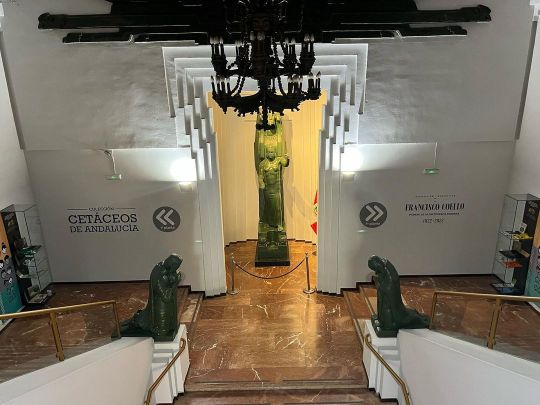
#Museo de la #Ciencia del #CSIC de #Sevilla (en Museo Casa de la Ciencia de Sevilla) https://www.instagram.com/p/CknpnFRtJOl/?igshid=NGJjMDIxMWI=
0 notes
Text
Una delegación de Guinea Ecuatorial visita el CSIC para conocer la ciencia e innovación españolas
Una delegación de Guinea Ecuatorial visita el CSIC para conocer la ciencia e innovación españolas
El Consejo de Investigaciones Científicas y Tecnologías de Guinea Ecuatorial firma un acuerdo con la institución española para establecer futuras colaboraciones.
El Consejo Superior de Investigaciones Científicas (CSIC) ha recibido hoy la visita del Consejo de Investigaciones Científicas y Tecnológicas (CICTE), de Guinea Ecuatorial. La delegación ecuatoguineana se ha interesado por la…

View On WordPress
#CICTE#Ciencia#CSIC#Digitalización#España#Guinea Ecuatorial#Investigaciones#Relaciones Internacionales#Tecnológicas
0 notes
Text
i finally was able to send my first application for a predoc scholarship oh god
#it was the csic one#i won't be able to send the la caixa one until february#now ministerio it's your turn#drop the fpu 2022 challenge#or honestly any other#also the ucm scholarship page hasn't been updated since 2021 so that's lovely <3#if anyone knows of a page i can look at to see which scholarships are open please tell me#i have a few saved already but i'm always with this feeling that i'm missing a ton
1 note
·
View note
Text
The Medieval Site Of Dameraqad In Somaliland
In #Somaliland, Cornax-Gómez carried out excavations at #Dameraqad, located in what was once the principal territory of the Sultanate of #Adal, & occupied b/t the 13th & 16th centuries CE. #Archaeology
Continue reading Untitled

View On WordPress
#Abasa#Archaeological#Archaeology#Awdal region#Carolina Cornax-Gómez#Dameraqad#Heritage Sites#Horn of Africa#Incipit-CSIC#medieval#Religious#Somaliland#Spanish Higher Council for Scientific Research (CSIC)#Sultanate Of Adal#Survey
0 notes
Text
A small team of paleontologists at Museo Nacional de Ciencias Naturales-CSIC has discovered a new species of ancient feline based on study of a jawbone fossil. In their paper published in Journal of Vertebrate Paleontology, the group describes a jawbone fossil uncovered near what is now Madrid, some of its features and where it fits in on the family tree of felines.
Prior research has suggested that felines first evolved approximately 25 million years ago. In this new effort, the research team has found evidence of a feline that lived approximately 15.5 million years ago, near what is now Madrid, Spain.
Continue Reading.
180 notes
·
View notes
Photo
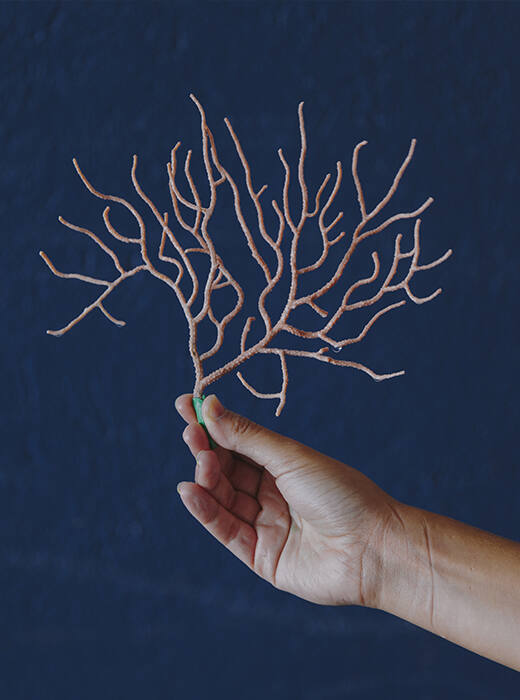
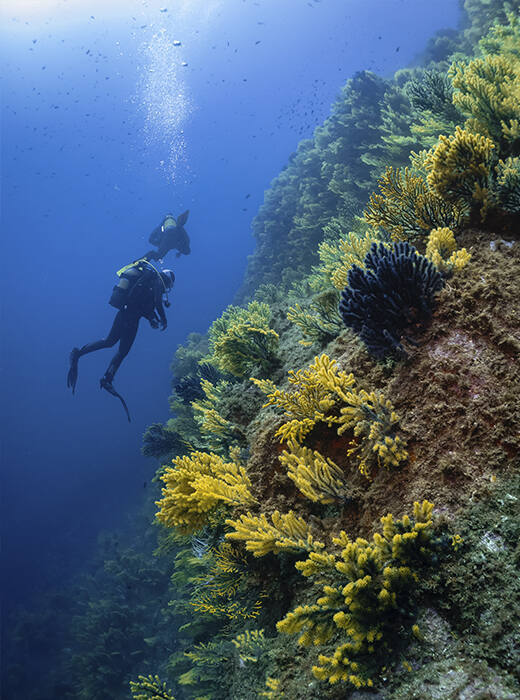
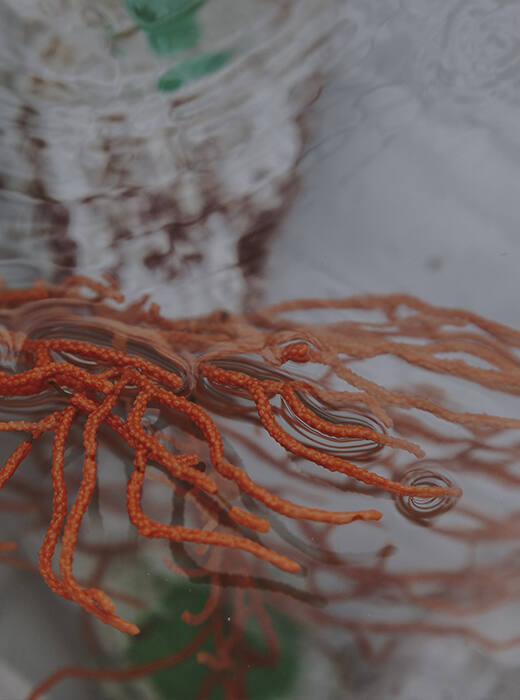
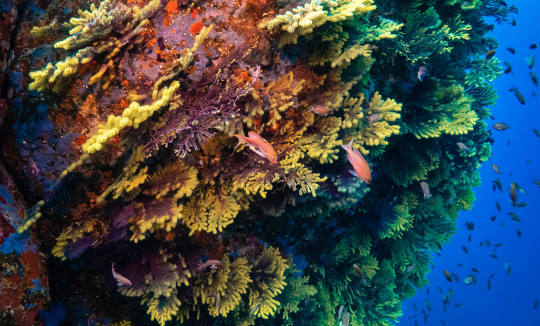
Gorgonias in the Mediterranean coast of Cap de Creus Natural Park (Comarques Gironines, Catalonia).
“The disappearance of gorgonias can cause a chain reaction that will affect the entire Mediterranean ecosystem” - Janire Salazar, Marine biologist from ICM - CSIC.
Gorgonias are organisms that make up entire underwater forests: areas in which many other species go to shelter, breed and grow. Mediterranean gorgonias currently suffer the daily impact of traditional fishing methods like gillnets. And like in any other forest, if the elements that make it up are not protected, the wildlife that it harbours will disappear. The ResCap project, which is carried out by ICM – CSIC, Fundación Biodiversidad and the fishermen’s associations of Port de la Selva and Cadaqués, aims to protect and recover all deep-sea gorgonias found in the Cap de Creus Natural Park.
Gorgonias are marine organisms which, despite the way they look, are not plants or algae, but animals. They are stationary, live in depths of more than a hundred meters, show very slow growth and take many years to recover. They are vulnerable, but great biodiversity depends on their growth. “Gorgonias are a structural species to the Mediterranean ecosystem, as they favour the growth and survival of multiple species,” says Marina Biel, one of the biologists from CSIC involved in the project.
Biologists, fishermen and agents from the Cap de Creus Natural Park work together to rescue all those gorgonias that have been accidentally trapped in fishing nets. Once recovered, the gorgonias are taken to the lab’s experimental aquariums to be studied and treated before they are freed again. When they are ready to go back to the marine environment, they are affixed to a base made of stone so that its weight will create the so-called “badminton effect” when they are released back into the sea. “The badminton effect ensures that the gorgonia will land on its feet on the seafloor and will therefore be able to feed itself and survive with no problems,” Marina Biel says.
The Pleamar projects bring to the forefront how important it is for biologists and fishermen to work together on the restoration of sea floors and the preservation of an essential species for the Mediterranean ecosystem: gorgonias. “Both parties work towards the same goal: to protect the sea floor and its biodiversity,“ ICM - CSIC biologists Janire Salazar and Marina Biel point out. Salvador Manera, a fisherman from the fishermen’s association of Port de la Selva and driving force of other sustainable projects linked to the Mediterranean, highlights how valuable these synergies will be into the future: “They help to raise awareness and to make us understand that we need to fish in a sustainable way if we want to carry on doing our job.”
Over the first year of the project (2018), more than 400 gorgonias were released back into the sea, with a survival rate above 90%. All parties involved hope to match or improve these results in 2019, as they also help to raise awareness about these kinds of initiatives. “There is an increasing number of people who are interested in marine conservation projects,” Janire and Marina say, as they insist on the meaning behind these actions: “The actions you take today will be rewarded tomorrow. It’s about giving something in return for the great things that the sea gives us each day.”
Shared from: Pleamar Projects: RESCAP & MITICAP. Institut de Ciències del Mar through Estrella Damm.
#natura#cap de creus#catalunya#marine conservation#marine biology#gorgonia#mediterranean#catalonia#sea#ocean#biology#biodiversity#wildlife#earth#ecology#sustainability#environment#conservation#wildlife conservation#marine life
253 notes
·
View notes
Photo

Wax worm saliva contains enzymes capable of breaking down plastics
A team of CSIC researchers has discovered that wax worm saliva degrades plastic; a discovery with numerous applications for treating or recycling plastic waste. Back in 2017, the team discovered that this worm species (the lepidopteran Galleria mellonella) is able to break down plastic (polyethylene), and now they have discovered just how it does this: its saliva contains enzymes (pertaining to the phenol oxidase family) that can rapidly set off polyethylene degradation at room temperature. These enzymes are the first and only known enzymes capable of degrading polyethylene plastic without requiring pre-treatment, according to Federica Bertocchini, a CSIC researcher at the CIB-CSIC (Centre for Biological Research) who led the study. The results of the work, pending review, have been published in preprint in the BioRxiv online archive.
"For plastic to degrade, oxygen must penetrate the polymer (the plastic molecule). This is the first step in oxidation, which is usually a result of exposure to sunlight or high temperatures, and represents a bottleneck that slows down the degradation of plastics like polyethylene, one of the most resistant polymers," explains Bertocchini. "That is why, under normal environmental conditions, plastic takes months or even years to degrade," she adds.
"Now we have found out that enzymes in the wax worm's saliva perform this crucial step: they oxidize the plastic. This means they can overcome the bottleneck in the plastic degradation process and accelerate its decomposition," she adds.
Read more.
1K notes
·
View notes
Text
Fidesz gazdasági hazugságok az utóbbi fél évből, amit beszop a magyar nép, mert olyan hülye és tájékozatlan, mint egy szamár segge, VOL 1:
Év végére egyszámjegyű lesz az infláció. Valóság: nem lesz, és jövőre sem sokáig, mert hazai rossz gazdasági döntések és piaci manipulációk erősítik a külső folyamatokat. A forint pedig egy rakás szar amúgy is, mert nincs mögötte lassan semmi sem.
Ennyi meg annyi az átlagbér. Valóság: nem annyi. Fegyverpénzt meg az anyádba számold bele, Varga fasz. Mi az a medián, kérdezi a nép?
Hamarosan jön a pénz az EU-ból, hisz az nekünk jár. Valóság: nem jön, mert Navracsics elmehet az emberarcával Veszprémbe Iggy Popra, de mást nem nagyon tud, csak hazudni és lopni a birtokra. Csics-cics-csics-csicska.
Igazából nincs kedvem tovább írni, mert annyira szomorú, hogy egy recesszió közepén, 2,3 százalékos GDP minuszban a Fidesz-KDNP népszerűsége változatlan, az ellenzék pedig felveszi a fizetését, és folytatja a semmit.
59 notes
·
View notes
Text
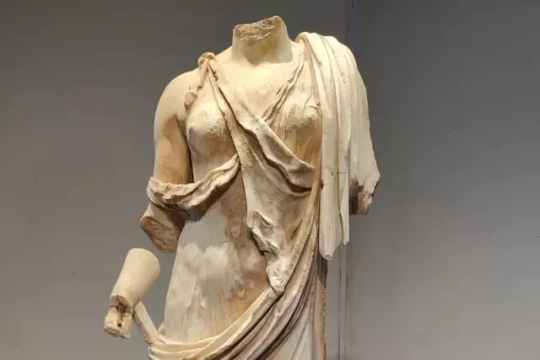
Archaeologists Discover 'Exceptional' 2,000-Year-Old Female Marble Statue
An "exceptional" marble statue from the Roman era has been discovered in Italy, researchers have announced.
The statue dates to around 2,000 years ago—somewhere between the middle of the 1st century B.C. and the mid-1st century A.D.
Researchers from the Spanish School of History and Archaeology of Rome (EEHAR)—part the Spanish National Research Council (CSIC)—located the statue, which depicts a female figure, during excavations at the archaeological site of Tusculum.
The ancient city is located in an area known as the Alban Hills, which lies on the outskirts of Rome. In ancient times, this area—known for its luxurious villas and country houses—was often used by the rich as an escape from the capital.
The life-sized statue is in excellent condition and of high quality, although it is missing the head and parts of the arms, according to the researchers. It probably once belonged to an ancient bathhouse in the city.
"This is an exceptional discovery. At the time of discovery, only part of the statue's back was visible and it was lying on a thin layer of painted stucco, so it would be part of the ornamental program of the thermal baths," EEHAR director Antonio Pizzo said in a press release.
Some characteristics of the statue have led researchers to conclude that it may have been linked to the cult of the god Dionysus. For example, the statue features a depiction of a fawn skin that the followers of the god's cult wore.
Dionysus, also known as Bacchus, was a Greco-Roman god of wine, fruit, vegetation, fertility, ritual madness and ecstasy, among other traits.
By ARISTOS GEORGIOU.
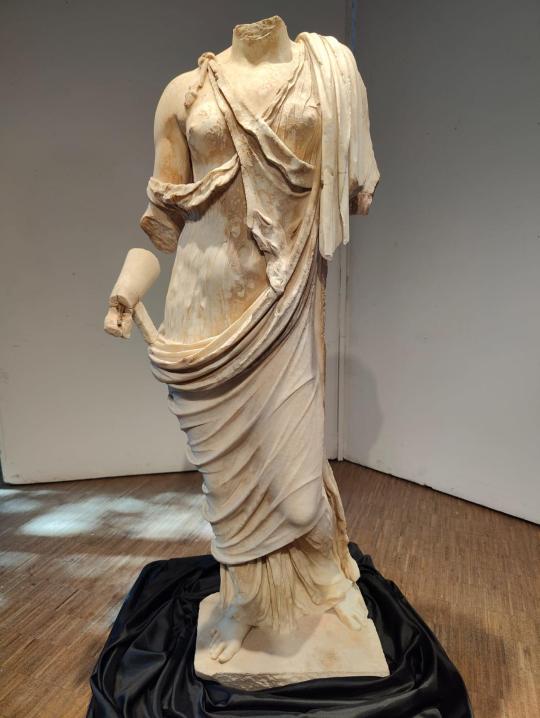
#Archaeologists Discover 'Exceptional' 2000-Year-Old Female Marble Statue#Tusculum#Alban Hills#the god Dionysus#marble#marble statue#roman marble statue#ancient artifacts#archeology#archeolgst#history#history news#ancient history#ancient culture#ancient civilizations#roman history#roman empire#roman art
48 notes
·
View notes